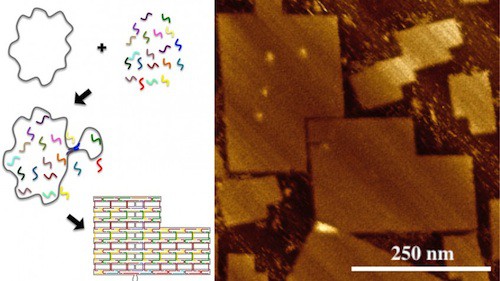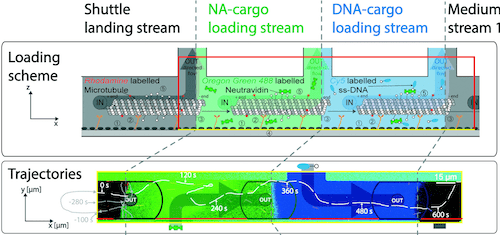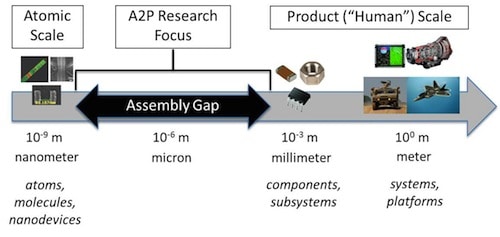A phosphorescent molecule is made to flap like a butterfly when absorbed light shortens the distance between two platinum atoms.
Light-driven molecular flapping emits white light


A phosphorescent molecule is made to flap like a butterfly when absorbed light shortens the distance between two platinum atoms.

A small, interactive group of invited experts gathered in Palo Alto recently to discuss prospects for revolutionary advances in energy storage, transmission, and generation through nanotechnology.

To emulate the process by which nature assembles complex organic molecules by passing subunits through a series of enzyme domains, UK chemists developed a procedure to elongate a boronic ester by using a reagent that inserts into carbon-boron bonds with precise control of molecular configuration.

The US NSF has announced a program to support fundamental research leading to complex nanosystems.

A new DARPA program seeks to bridge the gap from atoms to macroscale product manufacture in two steps, the first of which is from atoms to micrometer-scale feedstocks. DNA origami may be part of the solution.

A 10-fold larger breadboard and 350-fold lower DNA synthesis costs make DNA origami a more useful stepping-stone toward atomically precise manufacturing.

Swiss researchers have used biomolecular shuttles to capture molecular building blocks from solution and transport them across fluid flow boundaries to be further manipulated in a subsequent chamber.

Register by Sept. 5 to attend a Proposers Day webinar on either Sept. 9 or 11 to learn the technical objectives of DARPA’s new “Atoms to product: Aiming to make nanoscale benefits life-sized” program.

An interview with UK nanotechnologist Richard Jones argues that the surest and most efficient path to advanced nanomachine function will incorporate or mimic biomolecular nanomachinery rather than scaled down rigid conventional machinery.

Attaching a 200-nm-diameter magnetic bead to a 1-nm diameter synthetic molecular machine allowed optical visualization of the motion of the machine and manipulation with a magnetic tweezers.